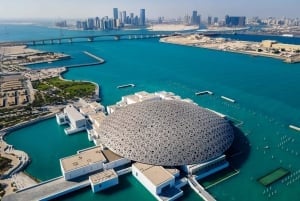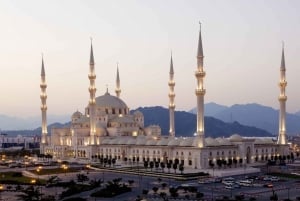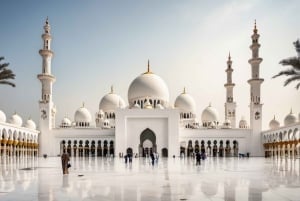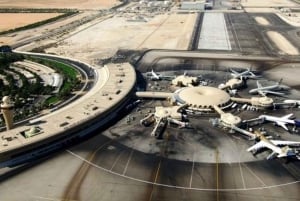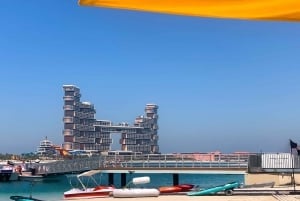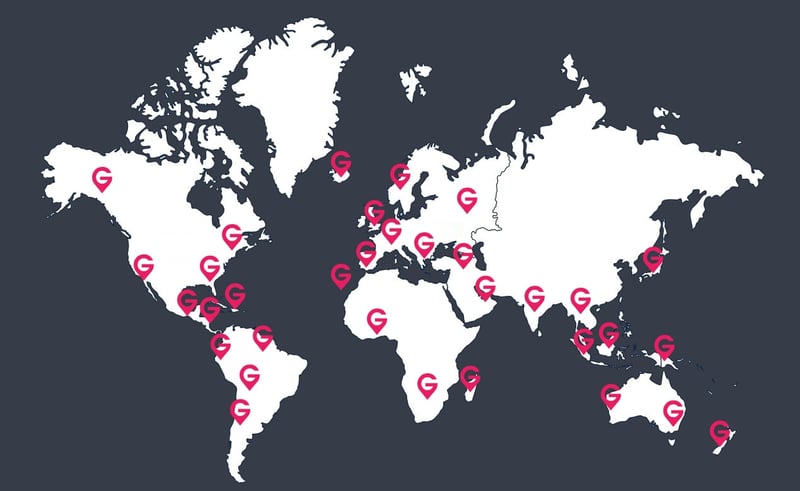Abu Dhabi Geography
Abu Dhabi is the capital sheikdom of the United Arab Emirates with geographical coordinates 24° 28' 0" North, 54° 22' 0" East and the largest among the emirates, occupying more than 80% of the UAE’s land. Situated on the north-eastern part of the Persian Gulf on the Arabian Peninsula, is just 250 metres from the mainland with an impressive coastline that stretches over 700 km.
Desert dominates Abu Dhabi’s geography, covering as much as 70 percent of its land area. Situated on a low-lying island with landscaped gardens, parks and tree-lined avenues and roads, Abu Dhabi is the home to picturesque beauty. A special feature of the city includes its signature Abu Dhabi Corniche which offers the tourists an opportunity to enjoy the breathtaking view of the city and sea while walking or cycling. The beauty of this capital city of UAE is enhanced by the presence of dazzling water of Arabian Gulf surrounding it. Nearly 200 islands fall under the Abu Dhabi Emirate with some of the major islands Saadiyat, Al Futaisi, and Sir Bani Yas Island. The three main bridges, Maqta, Mussafah and Sheikh Zayed Bridge, connect the island of Abu Dhabi city to the mainland.
Spread across an area of 67, 340km², Abu Dhabi is home to two riveting oases - Al Ain and Liwa - that together form an important part of the city. Liwa oasis, located at the centre of the Al Dhafra region, is rich in lush greenery and water resources. Located at two and half hour drive from Abu Dhabi, the place is the abode to some of the largest and most spectacular sand dunes in the world. The Hajar Mountains located in the east, offer a majestic touch to Al Ain which is the second city of Abhu Dhabi Emirate and the capital of the eastern region of the emirate. The western region of Abu Dhabi comprises of over 50 villages, with the capital being Zayed City and the main onshore oil fields are located here. Al Ain owns a highly fertile soil relative to other emirates in the UAE, which has enabled the growth of vast vegetation in the area. The Hajar Mountain had been a source of copper that was traded by the tribes who occupied this desert before 4000 years. The Emirate of Abu Dhabi is bordered by the Kingdoms of Oman to the east, Saudi Arabia to the south and Dubai to the northeast.
Famous Geographical Landmarks in Abu Dhabi
Mountains: Jebel Hafeet which measures 1,300 metres and the highest peak in the emirate, lies to the south of the city of Al-Ain, and is an extension to the Hajjar mountain range.
Waterfalls: Jebel Hafeet generate occasional waterfalls during winter and immediately after rainfall.
Forest: Saxaul dew forest found inland to the south of Abu Dhabi.
Caves: Jebel Hafeet has got several caves which are of archaeological importance. Magharet Qasir Hafee is the largest and most impressive of these cave networks and has 450 metres of shafts, passages and chambers leading up to a depth of 96 metres.
Oases: Abu Dhabi geography is home to two natural oases - Al Ain and Liwa.
Lakes: Artificial lake at Al Mabrazah.
Permanent spring: One at Ain bu Sukhanah in Al Ain.
Lagoons: There is one lagoon complex


